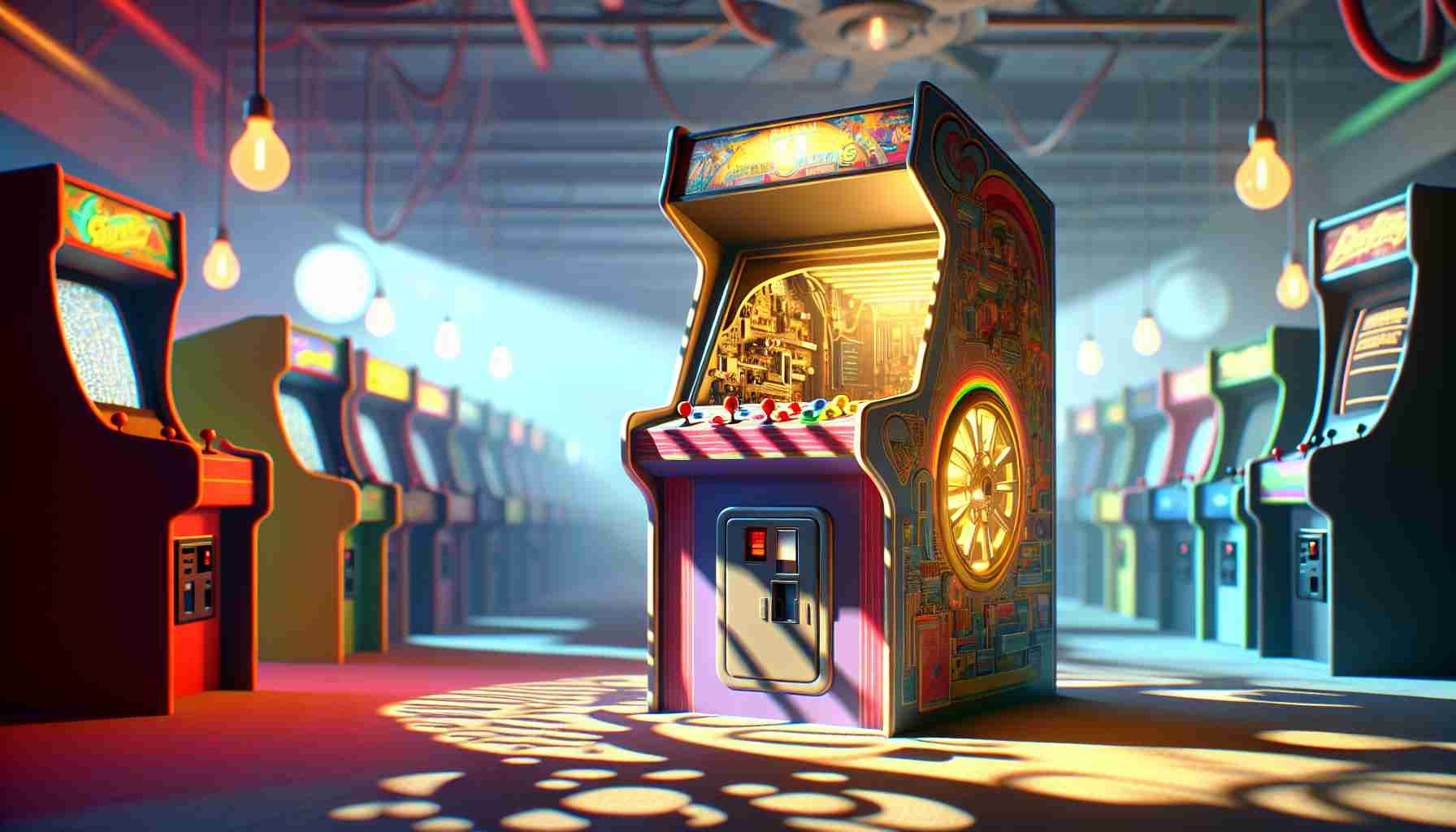A Remarkable Replica of Space Race!
In a groundbreaking effort, Heber’s Richard Horne has resurrected a beloved piece of gaming history by creating a fully functional 3D-printed replica of the classic arcade game, Space Race. This iconic game, launched in July 1973, marks a significant milestone as the first racing arcade game, encouraging players to skillfully navigate through obstacles while racing to the top of the screen.
Originally emerging after the blockbuster success of Pong, Space Race didn’t achieve the same fame, resulting in a scarcity of original cabinets today. The designs of these cabinets are notably unique, often featuring an unusual angular structure with swirling glitter that intrigued many gamers.
To tackle the challenge of creating a modern version, Horne utilized a meticulous scanning technique. Partnering with vintage gaming expert Ed Fries, he employed an iPhone’s lidar scanner, allowing for an accurate 3D model of an original cabinet to be produced. Following this, Horne refined the scan and divided the model into manageable segments for 3D printing.
The assembled parts, crafted from reclaimed filament, were treated with care — sanded and coated in resin to closely mimic the original fiberglass finish. This newly minted cabinet now stands proudly at the Arcade Archive in Gloucestershire, UK, inviting visitors to experience a slice of arcade nostalgia alongside revered titles like Pong and Computer Space. While the project continues to evolve, the digital files for this incredible build are yet to be released to the public.
The Cultural Resonance of Reviving Gaming History
The revival of the Space Race arcade game has profound implications that extend beyond the realm of nostalgic gaming. As society becomes increasingly digital, the act of resurrecting analog artifacts speaks to a broader movement valuing cultural preservation in our fast-paced, technology-driven world. This push to revive retro gaming not only caters to long-time enthusiasts but also serves to educate newer generations about the origins of interactive entertainment.
Moreover, as more individuals embrace 3D printing technology, this project exemplifies its potential to disrupt traditional manufacturing and promote sustainability. By utilizing reclaimed materials, creators like Horne are contributing to a circular economy, challenging the throwaway culture pervasive in today’s consumer landscape. This trend mirrors a growing demand for recycled goods, indicating a shift towards more environmentally conscious practices in both gaming and broader industries.
Looking ahead, we can anticipate an increase in similar projects that merge nostalgia with innovation, potentially leading to a resurgence in appreciation for classic games. This blending of the past and present underscores the importance of recognizing our digital heritage while fostering a new wave of creativity that embodies our global cultural narrative. As the lines between physical and digital blur, the long-term significance of such initiatives is undeniable: they will shape how future generations experience and interpret the evolution of entertainment.
Reviving Retro Gaming: The 3D-Printed Space Race Experience
Introduction
In a remarkable fusion of nostalgia and modern technology, Richard Horne has brought the forgotten classic Space Race back to life with a fully functional 3D-printed replica. Originally launched in July 1973, Space Race was the first racing arcade game, challenging players to navigate obstacles while racing upwards on the screen. This revival not only highlights the significance of retro gaming but also showcases the innovative methods used to create replicas that keep gaming history alive.
The Legacy of Space Race
Space Race was spawned from the early days of arcade gaming, following the success of Pong. Despite its pioneering status, it never reached the same level of cultural acclaim, leading to a scarcity of original cabinets today. The game featured a unique angular design and an eye-catching glittery aesthetic, which contributed to its appeal among players of the time.
The 3D Printing Process
Richard Horne utilized cutting-edge scanning technology to create this modern homage to a gaming classic. By teaming up with Ed Fries, a vintage gaming expert, Horne harnessed an iPhone lidar scanner to capture the intricate details of an original cabinet. This detailed scanning process ensured the production of an accurate 3D model, which was then refined and sectioned for easier printing.
Features of the Replica
– Materials Used: The replica is primarily made from reclaimed filament, showcasing a commitment to sustainability.
– Finishing Touches: Each piece was meticulously sanded and coated in resin, replicating the authentic fiberglass finish of the original cabinets.
– Location: The completed cabinet is displayed at the Arcade Archive in Gloucestershire, UK, standing alongside other iconic titles such as Pong and Computer Space.
How to Experience It
Visitors to the Arcade Archive can now play the recreated Space Race, experiencing firsthand the nostalgia of this classic title. The mixture of modern technology and vintage gaming offers a unique attraction for both new players and seasoned arcade enthusiasts.
Future of the Project
While the replica has been completed, the digital files used in its construction have yet to be released to the public. There are expectations that Horne may eventually make these files available, which could allow other enthusiasts to create their own versions of Space Race.
Pros and Cons of 3D-Printed Arcade Replicas
Pros:
– Preservation of Gaming History: Such replicas keep the memory of classic games alive.
– Customization Potential: 3D printing allows for modifications that can enhance gameplay or aesthetics.
– Sustainability: Using reclaimed materials can reduce environmental impact.
Cons:
– Access to Original Files: The lack of publicly available files limits the project’s impact on the gaming community.
– Quality Variability: Not all 3D-printed replicas will match the quality of professionally manufactured cabinets.
– High Initial Investment: The technology and time required for quality 3D printing can be significant.
Conclusions
The revival of Space Race through advanced 3D printing technology serves as an inspiring example of preserving gaming history while integrating innovation. As the project evolves, followers of the retro gaming scene eagerly await the potential release of digital files, which could inspire a new wave of arcade restoration projects.
For more insights into retro gaming innovations, visit Arcade Archive.
